Mingun sits on the banks of the Ayeyarwaddy, about 11km upriver from Mandalay. Again there are no bridges nearby, so the best way to get there is by boat.
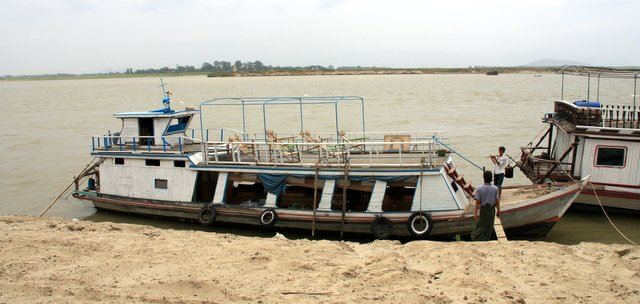
We could have managed with something a little smaller
Unlike the small row boat at Inwa, we had a large boat to just the two of us, which was excessive but peaceful. There were more crew than passengers.
Once at Mingun we walked the plank to shore and were met by another of the random guides who pop up everywhere. Ours was a friendly university student earning a little extra cash for his studies.
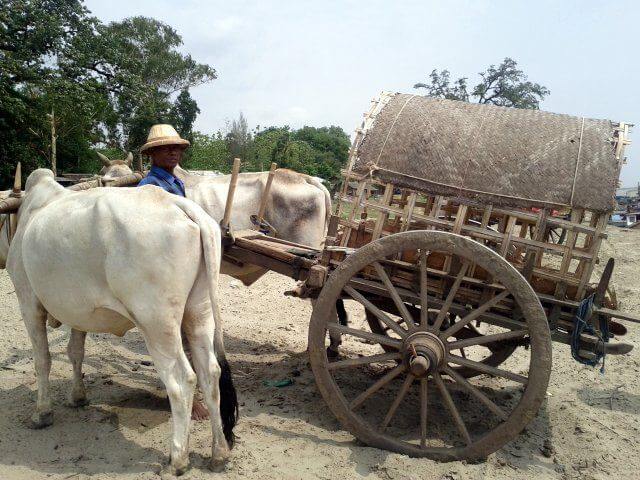
It felt bigger at the time.
He was a great guide, but slightly annoyed us by insisting that we needed transport to get around. Horse and cart is more prevalent in Myanmar, but here we had a two cow chariot. It was cheap enough, but given the whole area is less than a kilometre long, completely unnecessary.
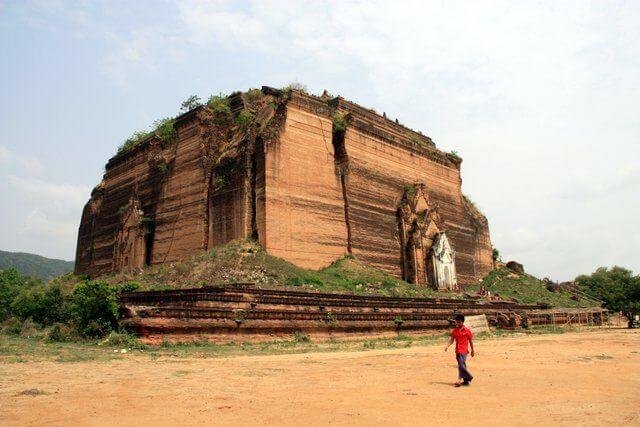
Mingun Pahtodawgyi – would have been 3 times taller
Mingun Pahtodawgyi
This stupa, started by Bodawpaya in 1790 was intended to be the world’s largest stupa. The original plans called for it to be 150m high – roughly the same height at the Great Pyramid in Giza. The king watched from the safety of a small island in the river whilst thousands of prisoners of war toiled over the construction.
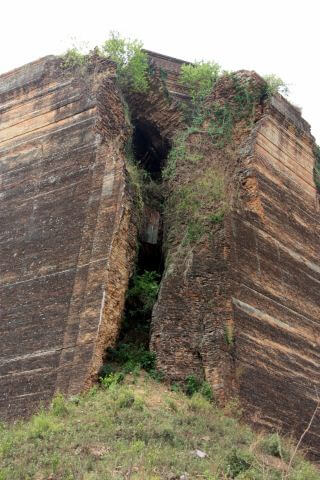
Cracks in Mingun Paya – going to need more than Polyfilla
The king died not longer after, so construction was stopped whilst the building was only 50m high, just a third of its intended height.
An earthquake in 1839 caused huge cracks to appear all over the structure, but it must be stable as visitors are still allowed to climb to the top and take in the view back to Mandalay.
Back near the river is Pondaw Paya, a 5m high scale model of the plans for the Mingun Pahtodawgyi. Had it been completed it would undoubtedly have been one of the new wonders of the world. Instead it holds the record for the world’s largest pile of bricks.
Mingun Bell
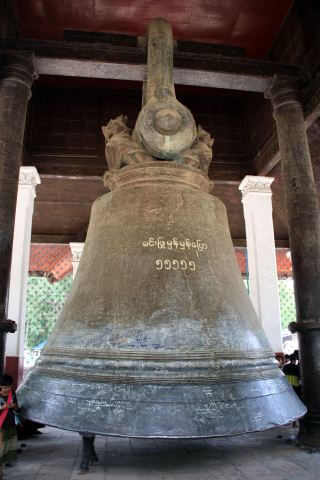
Mingun Bell – note the legs inside and the kid about to hit the rim
It’s inscribed with the number 55555 in Burmese script, which is the weight in viss (a Burmese unit of weight) equating to just over 90,000kg.
It seems a hugely popular attraction with the Burmese visitors – far more so than any of the other sites at Mingun. It hasn’t got a clanger (is that what the dangly bit is called?) but as soon as anyone climbs inside kids will thump the outside, sounding the bell’s deep chime.
The building housing the bell was also damaged by the 1839 earthquake, but the bell survived intact. All the way up until 2000 it was the world’s largest working bell until the Chinese built a bigger one in Henan.
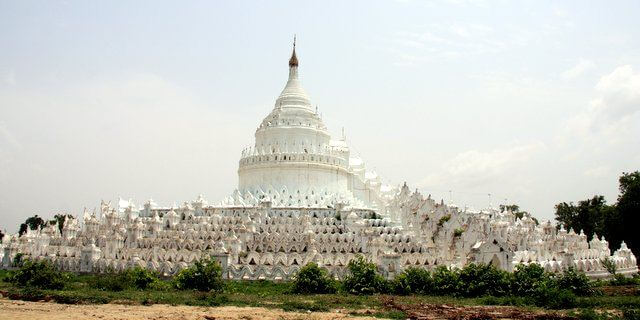
Hsinbyume Paya
Hsinbyume Paya
In Buddhist mythology Mount Meru is considered to be the center of all the physical, metaphysical and spiritual universes. It is also the abode of Lord Brahma and the Demi-Gods.
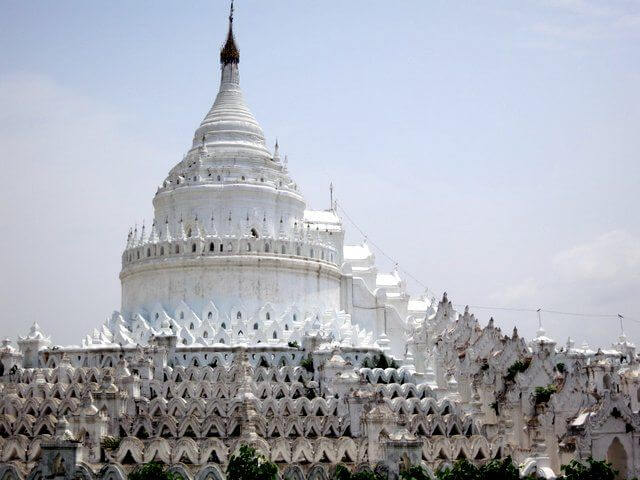
The pagoda atop Hsinbyume Paya
Hsinbyume Pagoda is based on a description of the Sulamani pagoda on Mount Meru. The lower seven wavy terraces representing the seven mountain ranges leading up to Mount Meru.
Hsinbyume Paya was built by Bagyidaw, the same king whose palace and watchtower were at Inwa.
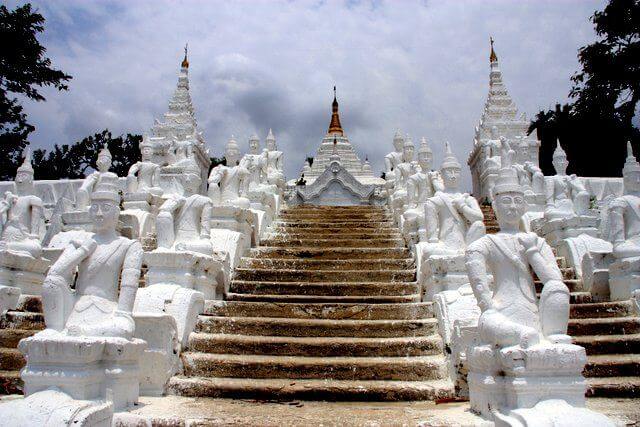
Steps lead up to Settawya Paya from the river
Settawya Paya
Walking up from the riverbank the second construction is the Settawya Paya, said to contain a footprint of Budda. More usefully, it was a pleasantly cool place to wait for the return of our boat for the trip back to Mandalay.
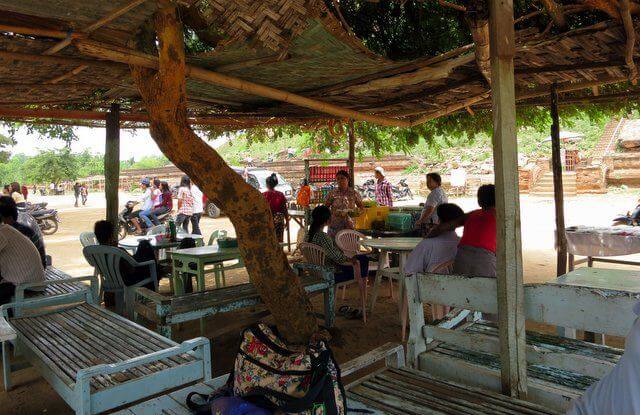
It’s almost inevitable to come away with a t-shirt
Mingun Vistor Tips
The café outside Mingun Pahtodawgyi is really friendly, as is the very persistent T-shirt seller there.
Right next to the café is the Sagaing-Mingun Zone Fees counter where everyone needs to pay a $3 fee.
You don’t really need an ox-cart, but the driver probably needs the money more than you do.
Look out for Irrawaddy Dolphins chasing the boat ride there and back.






Pingback: @mfzdos
Pingback: Micki & Charles (@BarefootNomads)
Pingback: Gear Up and Play (@gearupandplay)
Pingback: Maria (@acceleratedstal)